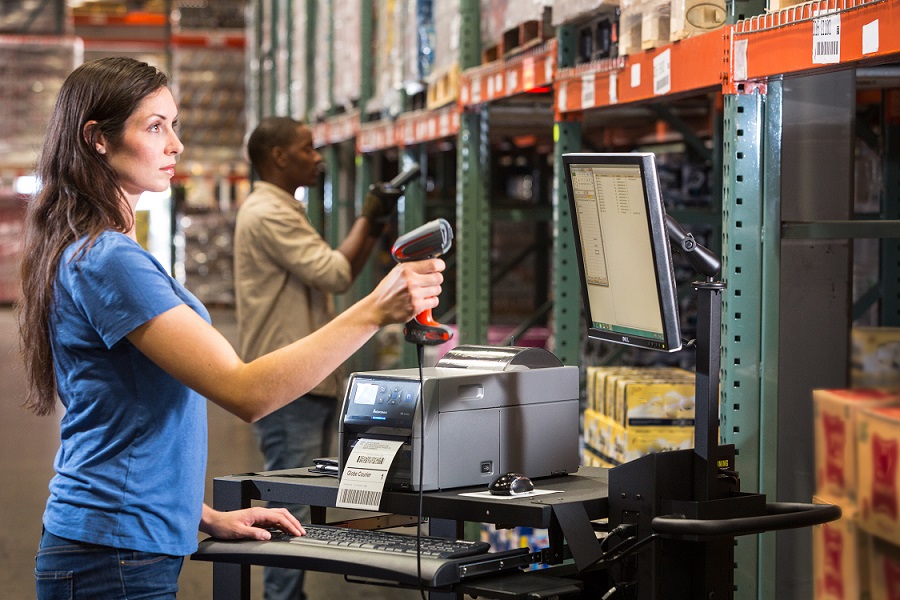There are hundreds of common types of barcodes, and they have been used to identify and track everything from massive train cars to tiny electronic components — even surgical instruments and living insects.
With so many options available, it can be difficult to know which type of barcode is best for your application. While each company has its own unique requirements, there are a few basic guidelines that can help you narrow your search. Below, we’ve listed some of the most common types of barcodes, common uses, and a few suggestions that will make it easier to select the right type of barcode for your application.
Linear/1D Codes
One-dimensional (1D) or linear barcodes are made up of a pattern of lines and spaces of varying widths. They can encode a limited amount of alphanumeric characters and are commonly used for inventory or asset tracking applications. They are also used for package tracking, mail tracking, and other applications where serialized items need to be tracked or managed.
Common types include:
UPC: These barcodes are a must for items that are scanned at the point of sale in retail applications in the U.S. In Europe, retailers use the similar EAN code.
Code 128: This compact code is used for inventory management, shipping/receiving and asset tracking in the logistics industry.
Code 39: The U.S. Department of Defense has standardized on this code for tracking applications. It can encode just 39 characters, and is often used in government and manufacturing applications for shipping/receiving, asset tracking, and other identification purposes.
Codabar: This is the standard code on FedEx air bills and is often used in libraries and blood banks. It can be accurately read even using primitive printing techniques such as dot-matrix technology.
In most applications, the 1D code is linked to information in a database. That information (like pricing) may change frequently. The tagged items (or at least their labels) might also be disposable — for example, FedEx or UPS packaging, or retail item packaging.
2D Codes
Two-dimensional (2D) barcodes use dot, square, or hexagon patterns to encode data both vertically and horizontally. They can encode much more data in a much smaller area than is possible with 1D codes. In some cases, these codes can store thousands of digits or characters, or even photos and video.
These codes are used for tracking very small items. In advertising applications, they link users to web content. 2D codes are also used for permanent tracking of assets like aerospace parts or heavy machinery or surgical instruments. In some applications, 2D codes are etched or directly marked on the item rather than using a label.
Common 2D codes include:
QR Code: Free codes used in advertising to link users to URLs and other content
Datamatrix: Used for labeling small goods in the healthcare and electronics industries
PDF417: Chosen when it’s necessary to store large amounts of data and are used to encode graphics, photos, fingerprints, and other high-density information
Aztec: Often used for tickets and airline boarding passes
Maxicode: Used to track UPS shipments.
Your ultimate selection will be based on the type and amount of information you need to encode. To make the best choice, also consider whether the item will be scanned at a retail store, the amount of space available, and the type of material you’ll print the code on.
In addition to evaluating the type of barcode you need, consider the type of label you’ll be using. Even the right barcode won’t help you if the label doesn’t survive long enough to be scanned. You’ll need a printer that can generate reliably accurate barcodes. The barcode itself will need to meet industry or customer specifications and the label (if you are using one) should be durable enough to withstand your operating environment.
It’s likely you will find yourself using different barcodes for different applications — and most companies use a mix of 1D and 2D codes. A barcode scanner that uses imaging technology can read both 1D and 2D codes. For example, Honeywell’s line of industrial and general-purpose barcode imagers can scan both types of codes and can provide longer read ranges and more reliable scanning than laser scanner technology.
No matter what your industry, there is a type of barcode that will suit your application.




